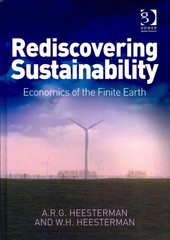ECON2200 - Intermediate Microeconomics
Problem 2: Suppose that there are two inputs to the final output of "butter product"(@), pure butter (x) and palm-oil- butter-substitute (y). For simplicity, ignore other inputs. Suppose that the quality of the butter product is independent of the proportion of x and y used. The units for the inputs are kog butter and ky of palm oil- butter-substitute (pbs) respectively. The price of the butter input is Px = $6/butter unit and the price of the palm-oil substitute is Py = $2/pbo unit. The production function is: Q = f(x.y) = x+ y. a) Suppose this butter product company wants to make 100 butter product units per second. Find an equation of the corresponding isoquant and plot on a graph. b) Plot a family of isocosts on your graph including the isocost that minimizes the costs of producing 100 butter product units per second. c) Find the cost minimizing bundle of inputs of pure butter and palm oil substitute and the total cost of producing these. d) Based on the article on Buttergate, which country has been invaded by butter product in which the quantity of butter is less than 100%. https:/www.aljazeera comews/2021/3/4/buttergate-why-isnt-butter- softening-in-canada e) Do you think that the assumption that the product quality should be held constant a good one? Relate your answer to the short video of the Kate and Leopold Butter Scene at: https://www.youtube.com/watch?v=FwiObsJSFSI f) Palm oil is responsible for large amounts of rainforest deforestation including orangutan habitat. Suppose that high taxes on palm oil are levied to reduce this deforestation and these drive the price of palm oil butter substitute up to $8/pbo unit. What happens to the slopes of the isocosts. Label the new solution on the graph. Which product is not consumed at all and which is consumed in a positive amount. No calculation is required here.Problem 1: Isoquant, Isocost Cost Minimizing Approach to Factor Selection: Suppose Mr Once-ler has a thneeds company called "Thneed Inc.". Thneeds are soft fluffy things of questionable utility that people think they need. They are made from the soft tufts of the truffula trees. Suppose he has received an order to make 10,000 thneeds. Let Q represent the quantity of these thneeds produced per month. Suppose there are two factor inputs, L (labour) and truffula trees (K) where in this case, K is referred to as "natural capital". Mr Once-ler needs to decide how human hours of labour (L) [in hours/month] and truffala trees (K) [in trees/month] to hire or cut down respectively to make 10,000 thneeds over a 1 month period. Let the production function be:. Q = f(K, L) = 100 + [1/4 . K3/4 [1] A is the Technical Factor Productivity term (TFP) and is equal to 100. The marginal product of labour and capital are respectively: MP, (K, L) = 25 - () [2] and MPR (K, L) = 75 - [3] a) Find the equation of the isoquant for the production of Q - 10,000 thneeds. Rearrange to get K as a function of L. b) Plot and label this isoquant on graph paper labeled as Fig. 1. c) Find the marginal rate of technical substitution (MRTSLK) as a function of L and K. This can be thought of as the marginal benefit of hiring an additional labour hour in terms of saved truffala trees while keeping output constant. d) Suppose that the hourly rate of labour is w = $20/hour and the opportunity cost of cutting down a truffala tree is r - $40/tree. Write down a general equation of an isocost where TC represents total costs per hour due to these factor inputs. Fill in values of the K and L intercepts for a variety of total costs shown in Table 2 and then plot and label them on Fig. 1 along with your isoquant. e) The marginal opportunity cost of hiring a labour in terms of truffala trees equals the negative of the slope of the isocost. Find this MOC of hiring labour. f) Find the tangency condition. g) Use the tangency condition and the equation of the isoquant to find the cost minimizing quantities of labour and truffala trees and call these LLA$ and KUR*where "LR." refers to "long run". h) Find the minimum total costs of producing 10,000 thneeds over a 1 month period. Plot and label the long run cost minimizing Isocost on figure 1. i) Suppose that in the short run, you can only hire 30 labour hours per month. How many truffula trees will you need to cut down to meet the thneeds order. Calculate your total short run costs. Plot the corresponding isocost on your graph and label the short run cost minimizing bundle. j) Does this production function exhibit constant, increasing or decreasing returns to scale? Explain briefly. k) Are the marginal products of labour and truffala trees respectively decreasing, diminishing, or increasing? Explain briefly








